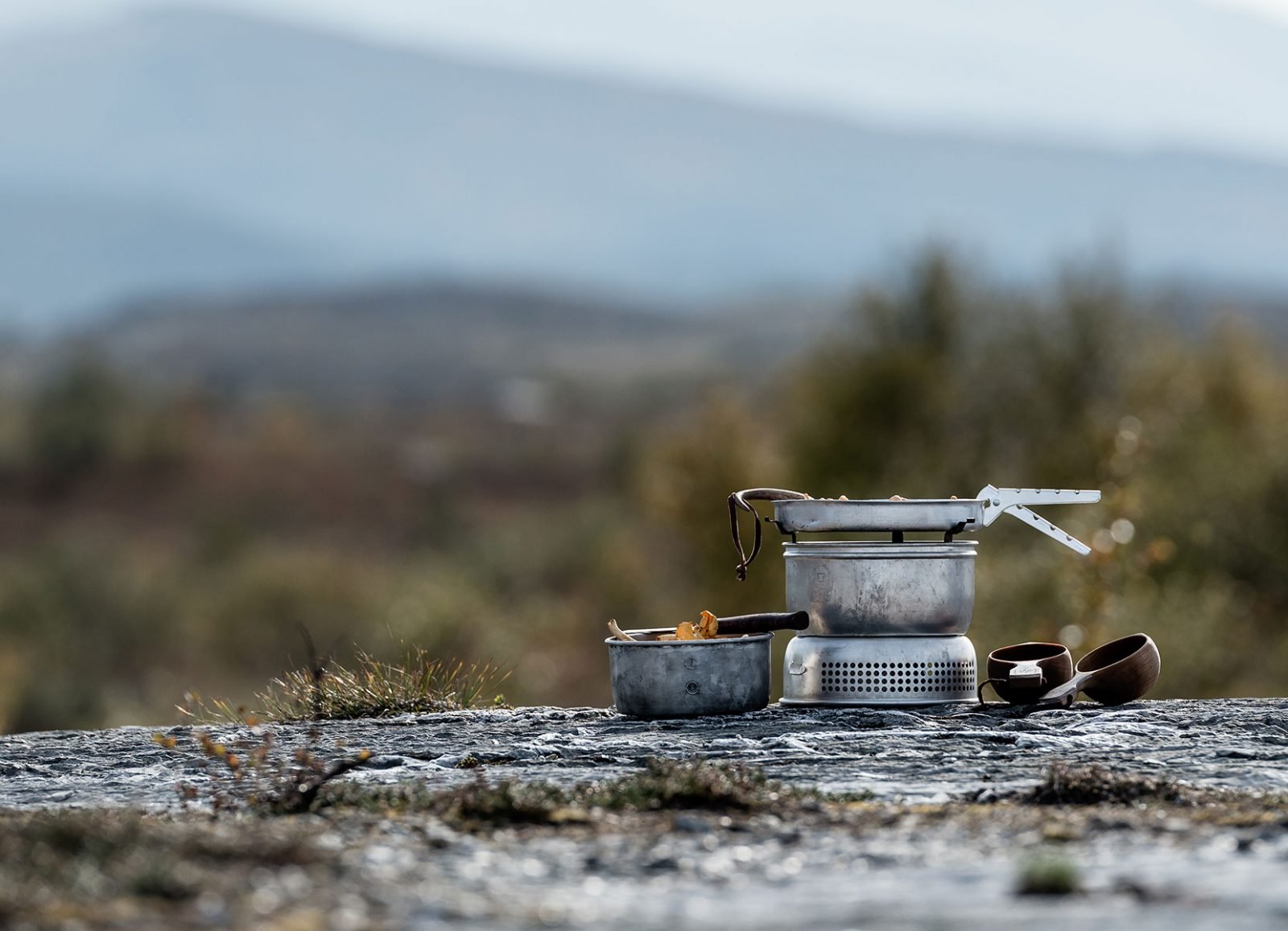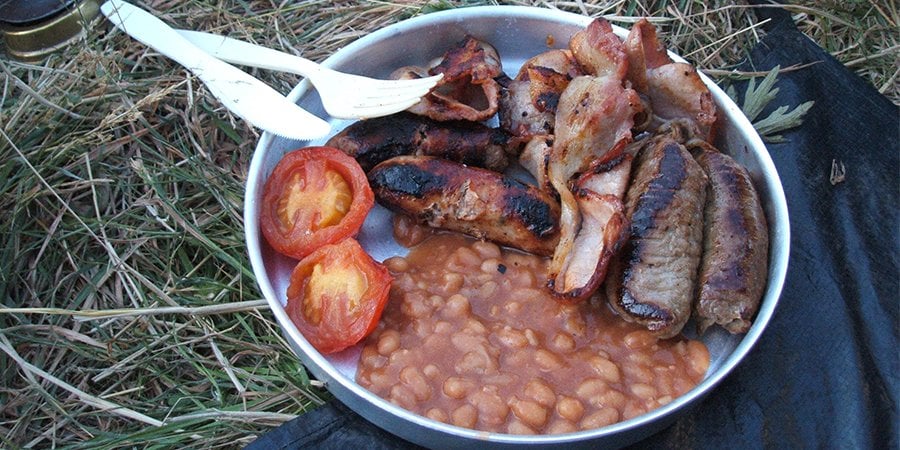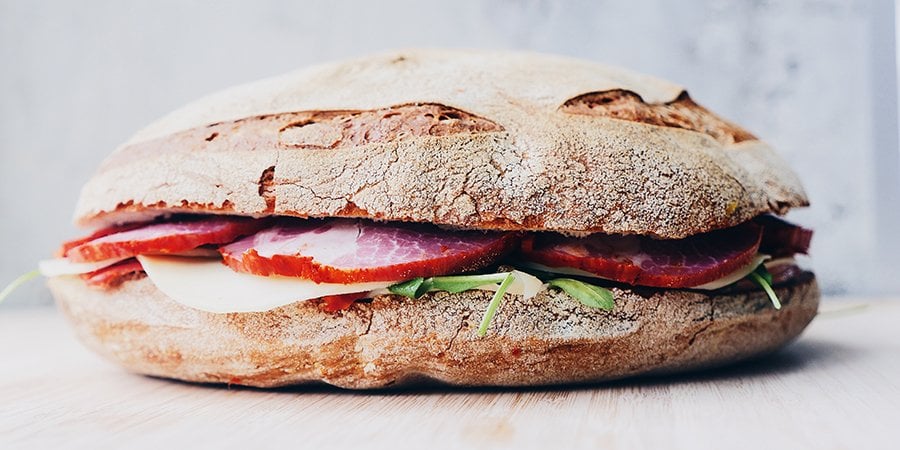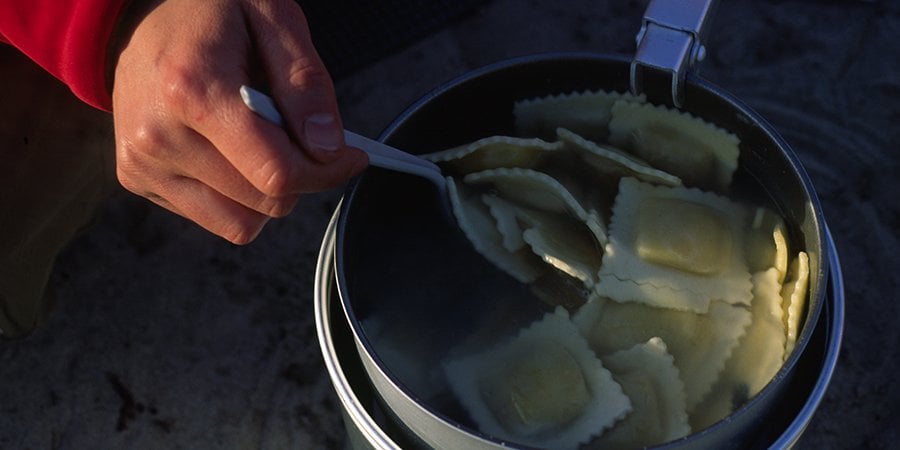Eating on your expedition

Making a meal together is one of the best team-building activities of the Expedition section. Getting your group to plan your meals, cook from scratch, manage a team budget, choose and agree on a menu and share food are all excellent for developing life skills.
Don’t think of expedition food as dull! This is a great opportunity for you to be creative and show off your skills.
You’ll need to cook a hot meal during your DofE expedition and show you can use a cooking stove or ‘camp craft’ effectively in the outdoors.
We recommend Trangia stoves as they are safe, conduct heat quickly and are lightweight to carry. Find out about DofE recommended stoves and cooking utensils here.
The key principles of expedition food
You should design an expedition menu that thinks about the following:
- Try to pack as much energy (or calories) into the least weight and volume possible. Depending on your activity, you may need between 3,000 and 5,000 calories each day.
- Choose foods that are high in sugars, carbohydrates and fats.
- Take food you like and enjoy and everyone in your team can eat, which are quick and simple to cook and will keep for the duration of your expedition, even in hot weather.
- Dried, cured, smoked or vegetarian foods will usually last well.
- Think about keeping weight and litter down by removing packaging and cooking as a team.
- Make sure all food is packed and waterproofed so that it will stand up to being squashed in your rucksack, being dropped or even sat on.
Meal inspiration
Breakfast
It is good practice to start the day with a substantial breakfast.
This can include cereals, muesli, porridge, noodles or even a full English with tea, coffee or hot chocolate.

“Make up your own porridge before you go with oats, nuts, fruit, and muesli, then add milk powder. Once you’re on your expedition, simply add hot water to make quick porridge.” Caroline Hague, DofE Supervisor
Lunch
Lunch is usually eaten while you’re on the go, so picnic or ‘packed lunch’ style foods that don’t need to be heated or kept chilled are ideal.
Ideas for lunches include sandwiches, pitta bread or wraps with other high energy foods like flapjacks, cereal bars, nuts, dried fruit, biscuits, sweets, jelly, mint cake and so on.

“Make up bags with the correct amount of tea or coffee plus sugar and milk powder for a single drink. Then simply tip the contents into a cup and add hot water – easy!” Andrew Kenyon, DofE Supervisor and Assessor
Dinner
Most participants choose to cook and eat their substantial daily meal in the evening at camp when you have more time.
With practice and planning, even on one stove, you could produce a hot three-course meal in a short amount of time.
Soup, curry, stews, pasta, bangers and smash or noodle stir fry are all great expedition meals and can be followed up with a hot or cold pudding, such as chocolate cake or crumble and custard.

“Ask for packets of mustard, mayonnaise, ketchup, milk, salt etc from a local café. They keep well and make meals taste better. For longer trips a little pot of garlic or chilli powder can spice up basic food. Keep them in a small container to protect them.” Dr Simon Young, DofE Manager
Find out more about food on your expedition here.
How to use your cooking kit safely
Get into good habits with your stove and camp craft to save time and stay safe when you cook outdoors:
- Halve your cooking time by placing a lid on your pan.
- Always use a purpose-built bottle to carry fuel.
- Keep your burner in a strong plastic bag to prevent tarnishing.
For more guidance on stove safety, download the DofE stove safety instructions here.
What food and cookware should I avoid taking on my expedition?
| What? | Why? |
| Glass | Glass is heavy to carry and could break in your rucksack |
| Tinned food | Tinned items are bulky and heavy to carry and need a tin opener |
| Food which requires refrigeration e.g. cheese, fresh meat, fresh milk, butter | These will go off and some can melt in hot weather |
| Eggs | Eggs are likely to crack in your bag and will go off |
| Crisps | Crisps take up a lot of room as they are in bulky packaging and get crushed easily |
| Chocolate | Chocolate could melt in your bag |
| Pot noodles | Pot noodles take up a lot of room as they are in very bulky packaging which can easily split |
| Energy drinks | Energy drinks use an excessive amount of fast burning energy sources and are not good for you |
Don’t forget…
After you have finished your delicious meal, you need to ensure a couple of things before packing up.
Firstly, you must check that any excess fuel is safely stored or disposed of in an eco-friendly way. Some fuels are fine to pour away but check the packaging before doing so. If you have chosen a non-stick or hard anodised Trangia, cleaning is super quick and easy. However, make sure you do it once the stove is cool and before you go to bed so that you don’t attract any animals in the night!
Secondly, make sure you clean your pots and pans thoroughly. Food left stuck to pans can cause illness and stomach upsets which will spoil your enjoyment of your expedition or worse still might mean you are unable to complete.
Lastly, make sure you collect any rubbish you have at the camp site. As bins aren’t always around, we recommend you store the rubbish in a plastic bag attached to your rucksack . This will avoid your clothes from smelling. You can then dispose of this at the first bin you find.
After you’ve cleared away the campsite and made sure you haven’t left anything behind, continue with your expedition; an experience like no other.
Save at least 10% on all your cooking equipment and accessories at GO Outdoors, Blacks, Millets, Ultimate Outdoors and Tiso with your DofE Card or Voucher.


